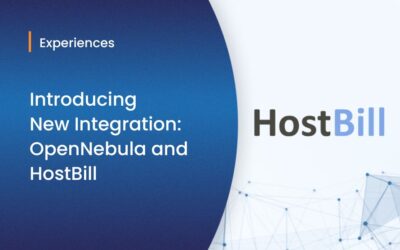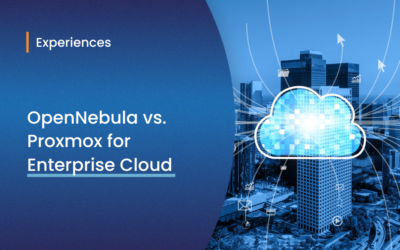Here at OpenNebula Systems, we continue our effort to help provide a clear, valuable perspective for users seeking insight into how OpenNebula matches up to its competitors in the market. And today, we are excited to share a detailed overview of just how OpenNebula lines up to one of its most complete and obvious competitors: OpenStack.

So many organizations are searching for the most comprehensive cloud technology solution to meet their enterprise needs, and so many factors come into play, ranging from its “total cost of ownership” (TCO), to its flexibility and openness for evolving strategies for the future, to the key capabilities it provides and the ease with which one can manage them. We have taken an exhaustive effort to evaluate what the two main OpenStack enterprise distributions— Red Hat OpenStack Platform and Canonical’s Charmed OpenStack—offer to organizations from a technological and commercial perspective, and match that up with the inclusive offerings that we provide with OpenNebula.
This is just about a 5 or 10-minute read, but it is certain to provide some very keen insight into how OpenNebula and OpenStack match up against each other. Here are a few key findings, to whet your palette:
- Subscription costs – For organizations looking for an enterprise solution with enterprise support and benefits, subscription costs for OpenNebula are between 33% and 80% less expensive than similar offerings by Canonical OpenStack and RedHat OpenStack.
- Maintenance costs – Where the installation, upgrades, and ongoing maintenance and administration of OpenNebula are designed to be managed by a single administrator, the various studies highlighting the teams of resources required to keep OpenStack up and running, provides a stark contrast.
- Software upgrades – When speaking of upgrades, the long chain of dependencies and single-points-of-failure that line the upgrade activities of OpenStack deployments, make OpenNebula’s simple and automated upgrade procedures seem like a no-brainer.
- Licensing – Sometimes “open source” doesn’t always necessarily mean open source. For RedHat OpenStack implementations, the OpenStack “Platform Director” required a commercial license to be purchased for all running environments – Production, Staging, Development. With OpenNebula, there are no obligatory licensing requirements.
- Multi-Hypervisor Support – Do you like flexibility? Run OpenNebula with KVM, VMware, LXD containers, or Firecracker microVMs. Run any of them or all of them. With OpenStack you’re stuck on the KVM highway.
- Virtual Machines and Containers – With OpenNebula you can easily combine traditional Virtual Machine workloads with application containers. Doing the same with OpenStack requires running a managed Kubernetes platform “on top”, translating to added overall complexity, resource consumption, and associated costs / dependencies on licensed products.
- Multi-site, Hybrid and Edge – Does the flexibility of incorporating public cloud and edge resources come “out of the box”? OpenStack has clearly not been designed for this purpose. Its reliance on PaaS solutions like Kubernetes adds bulk and added dependencies. With OpenNebula, the answer to this is a resounding “Yes”. With automatic provisioning, you can simply grow your OpenNebula private cloud with resources on remote cloud and edge locations.
If you have questions, don’t hesitate to reach out! 🤓



0 Comments